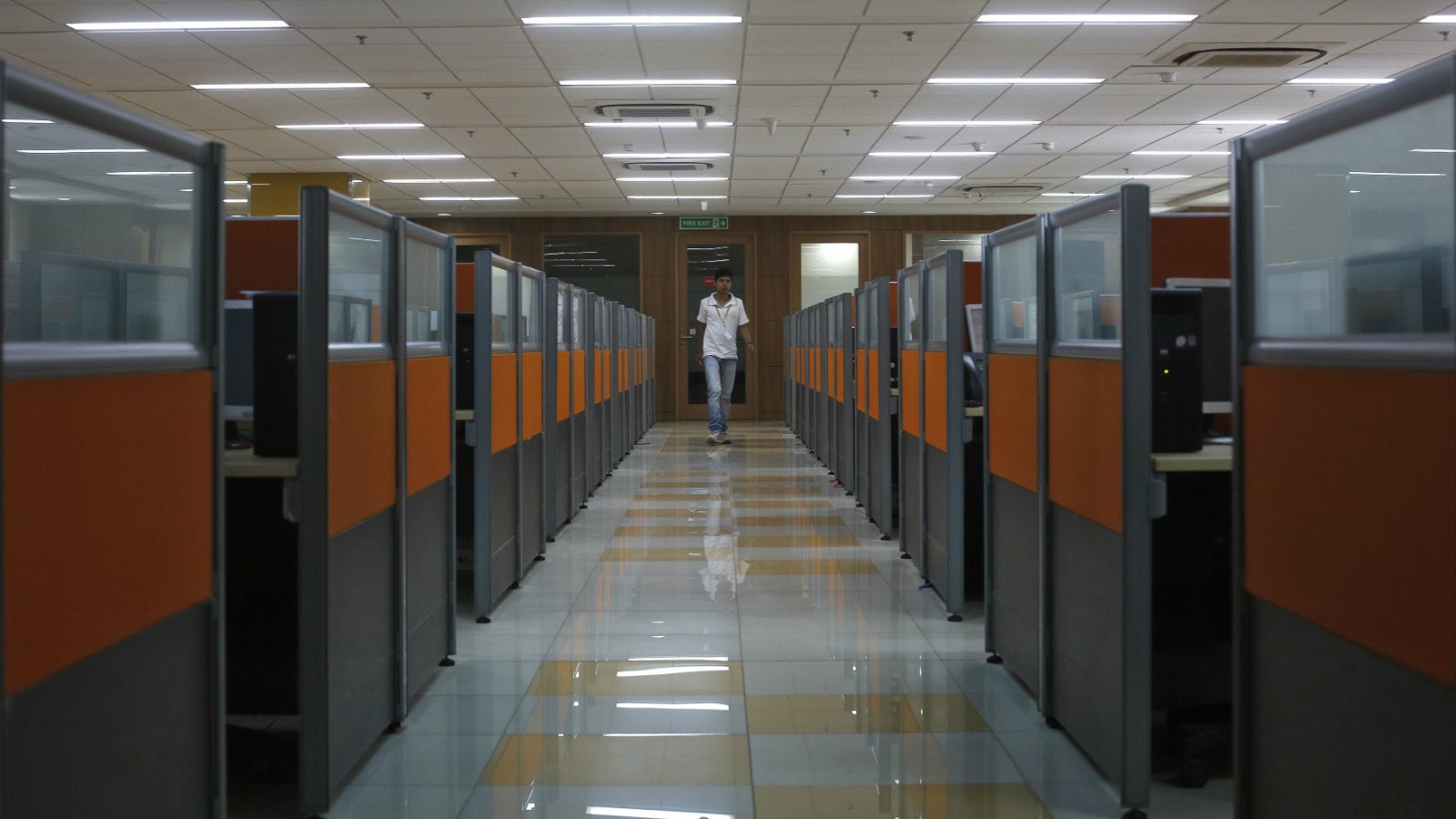Your IT job is at risk if you currently do these things for a living
The spectre of layoffs looms large over the Indian information technology (IT) sector. Human resource firms estimate that up to two lakh industry jobs will be lost annually over the next three years. Talk of Indian techies abroad being laid off, increasing local hiring, and re-skilling is rife, too.


The spectre of layoffs looms large over the Indian information technology (IT) sector. Human resource firms estimate that up to two lakh industry jobs will be lost annually over the next three years. Talk of Indian techies abroad being laid off, increasing local hiring, and re-skilling is rife, too.
But precisely which jobs face redundancy—and why? Quartz spoke to HR firms and here are the jobs with the most risk:
Technical help, customer support
First off the mark will be customer care and support staff. Those online trouble-shooting or enquiry chats you had earlier were mostly handled by real people. Now, however, chat bots are taking over.
Ditto with products that require demonstrations.
Testing
IT companies typically have one team writing the code and designing a product to tackle a certain business problem and another to review and test these. Earlier, firms needed engineers to manually test every program at every stage of execution. Now there are automated testing tools for this.
Basic coding and programming
Product design has evolved and engineers don’t have to write the basic codes anymore. Many of these basic codes are available in public domain and programmers can always build on them. Work that often took up to eight hours to finish can now be finished in two hours, thanks to the availability of standard programs. “Its like furniture that we make, you can build the furniture, a wardrobe, you can build from scratch. Earlier programmers did that. But now there are prefabricated components available; people just come and assemble it,” says Aditya Narayan Mishra, CEO of Bangalore-based CIEL HR Services. “They bring those components from the public domain or the company’s own library and assemble it.”
Further, tasks are increasingly being streamlined so that one person can handle a wider range of them. For instance, earlier, programmers had to use different platforms to write in different languages such as Java or C++. Now there is full-stack development, which means that various platforms have been integrated. So someone who is a full-stack developer will be able to do all kinds of programming with his skills, according to Mishra.
Maintenance
Most IT firms have maintenance teams taking care of projects following delivery. These 24X7 teams usually don’t have much to do unless debugging is required or other such issues need to be sorted. They are the ones who take care of the software that clients use, unlike others who take care of the overall IT infrastructure, system administration or network support. These employees also come with programming background. However, unlike the ones who build the application, those who help with sorting out issues aren’t in much demand, Alka Dhingra, assistant general manager of HR firm TeamLease Services, said.
Project managers
High-paying jobs with no clear interface with technology are at risk, says K Lakshmikanth, the managing director of Head Hunters India. IT firms often hire experts to take care of middle-level management and administrative functions. Often, most such experts aren’t hands-on with technology. As firms focus on streamlining operations, such employees are being let go of.
Senior level staff aren’t safe either. “Strategic senior level jobs such as CIO or CTO roles won’t vanish, but with the organisation pyramid getting leaner, companies would require fewer managers to manage different teams,” Mishra said.
Then there are the employees on temporary visas and currently based abroad and those “on the bench”; they are all at risk.
Ultimately, companies today only consider employee value.